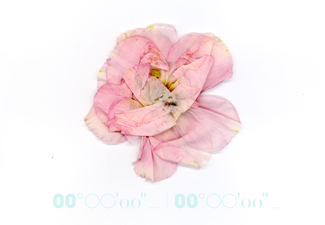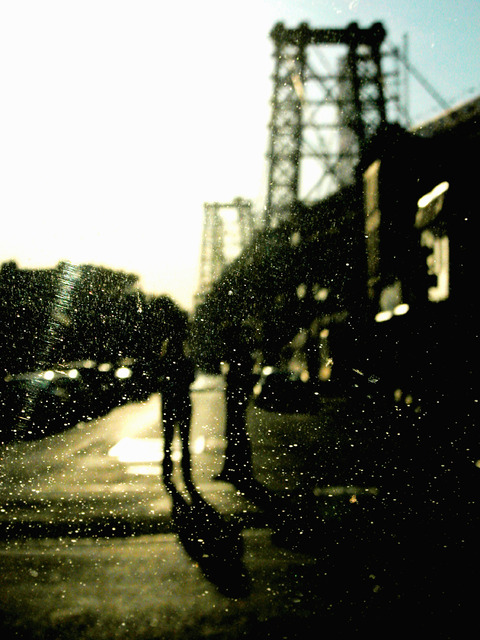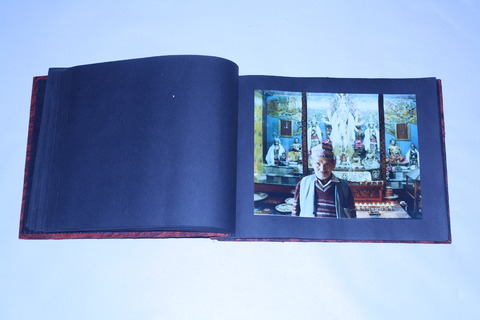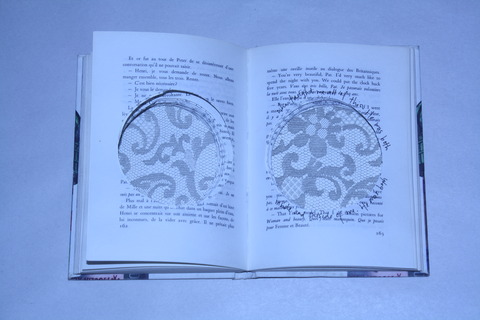Robertet was established in 1850 and is one of the oldest perfumeries in Grasse. They create fragrances, cosmetics, and flavors; they also a produce high-quality raw materials. Robertet created the scents for Bond No. 9 Bryant Park, the latest Chloe women’s fragrance, Gucci Rush, various hair products for Origins, and L’Oreal kid’s shampoo, among others. On Friday my class visited the Robertet factories with the intention of seeing the the production of the mimosa tree into a natural absolute.
The particular species of mimosa that grows in Grasse is native to Australia. It’s a medium sized tree that has pretty fern-like leaves and when in bloom, has beautiful pea-shaped bright yellow flowers. The flowering season is only two weeks long and occurs in mid-February. On Sundays, local people looking to make extra money drive out to the hills surrounding Grasse and prune the outer branches of the tree, gathering the flowers, leaves, and small stems. They sell their truckloads to collectors who in turn bring the mimosa to the production facilities. In the past, the main source of mimosa oil for perfumery was Grasse, but now there is competition from Morroco and China, because the labor to collect the branches is far cheaper.

On Thursday a batch of mimosa had been delivered to Robertet but the quality was not good enough for processing. In this case, the discarded material was used to render into fertilizer. Fortunately, we were able to see parts of the production process and smell the oils of treemoss, iris, beeswax, vanilla, tonka beans from the Amazon, champaca from India, and maté from Brazil. Heaven!
For natural raw materials, there are three common ways to extract the oils from the plants. For citrus fruits, most of the time the peels are expressed, or squeezed. For many plants, steam distillation is used whereby the plants are boiled in a still with water and the oil is later separated from the water. The resulting products are called essential oils (in some cases the water is also used in perfumery or flavorings, such as with rose water). Some plants, like the jasmine flower, will not release their scent through steam distillation. Using a chemical solvent, the scent is captured and turned into what is called a concrete, basically a wax. The wax can be separated out, producing the absolute oil, a highly concentrated viscous liquid containing the scent of the plant. (These are obviously abbreviated descriptions of the processes; for more information, wikipedia has thorough explanations. Also, one of the reasons that Robertet’s raw materials are so expensive is because of their finishing process. An oil can be refined any number of times to alter the composition, and customized to suit the needs of a client.)
There is also a process called CO2 extraction, and I was able to visit Firmenich’s plant in Grasse yesterday, but don’t understand the process well enough to be able to explain it, even rudimentarily. All I know is that it’s by far the most technologically advanced method and the inside of the production room felt more like a place where they would manufacture cars, not natural oils. That said, the final products smell wonderful and admittedly, closer to the fresh source (in hydrodistillation the scents can change a bit due to the boiling of the natural materials; in extraction, there is wilting). Yesterday I smelled carrot seed oil, sesame oil, tuberose, and white pepper, all from the CO2 process and they smelled amazing. According to Firmenich, their perfumers love working with CO2 products.

The pictures here are of mimosa concrete, produced earlier in the week. The barrel contains about 400 pounds of concete, but roughly 18,000 tons of mimosa were needed to produce that, for a yield of just 1%. The largest stills at Robertet hold about 450 pounds, so one can imagine the number of times the process needs to be repeated, and the amount of labor necessary.

Iris oil is highly-prized in perfumery, and Robertet’s prices for the absolute can exceed $100,000 per pound! The irises used for perfumery were traditionally grown in Florence, Italy, where the older generation would pick the roots of the species iris pallida. Now there is competition from China and Morroco, although the species grown in these areas are different. One reason for the astronomical price is the length of the process. The irises are harvested and three years later their roots are ready to be picked. The roots can either be peeled, producing a pale concrete and absolute, or left unpeeled to create iris noir. The roots are dried for fifteen days, after which they are put in storage for three years to age. Only then are they ready to be distilled. Natural iris absolute is used in perfumery, and also in flavorings where a small amount can enhance the taste of red berries. The absolute oil smells strong and herbaceous, dusty, heavy, with a woody aspect and a powdery dryout.
These pictures are the first step of distillation, as the ground iris roots are being put into the stills:



Here is a picture of beeswax concrete. Beeswax absolute is one of my favorite raw materials. It’s rich and warm, and has an animalic note.
After smelling all of these wonderful materials, we were treated to a tour of the rest of Robertet. We passed a laboratory where people were creating cosmetics and detergents, and were led upstairs to the perfumery. The perfume laboratory was absolutely silent, despite six people in lab coats working. Bruno, the sales director guiding us, said of the perfume laboratory, “It’s almost like a church.” Immense concentration is needed to measure and detect the minute changes made while creating a scent. The perfumers, however, are in an adjacent room where they are creating the formulas for scents on their computers. The formula is printed out and given to a laboratory assistant, who mixes the solution and gives it to the perfumer. Sometimes hundreds of revisions and are made to a scent before it is complete.



 April 26, 2009 at 5:46 |
April 26, 2009 at 5:46 |  Post a Comment
Post a Comment 
































